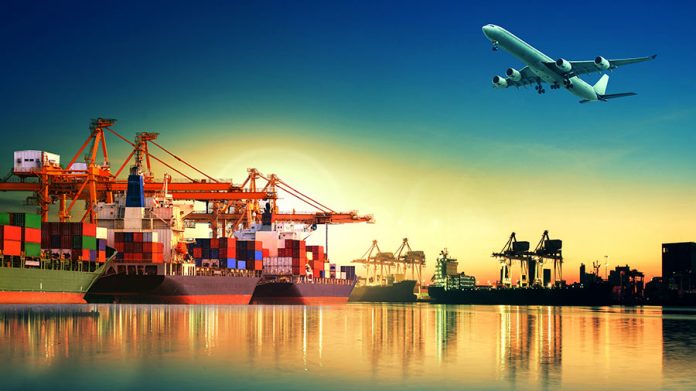This article is written by Chandana Pradeep, from the School of Law, University of Petroleum and Energy Studies, Dehradun. This article analyzes in detail about the general provisions of export and import in India.
Table of Contents
Introduction
“Trade is the natural enemy of all violent passions. Trade loves moderation, delights in compromise, and is most careful to avoid anger. It is patient, supple, and insinuating, only resorting to extreme measures in cases of absolute necessity” said by Alexis de Toqueville holds true as trade comprises of export and import of goods and services.
Export is defined as “goods and services that are produced in one country and sold to buyers in another”, while imports are defined as “ good or service bought in one country that was produced in another” and these two elements when combined together make the basis of international trade which is essential for globalisation to take place. Though these elements are a key feature for trade, it has its own hurdles to overcome. There are trade barriers either formal trade barriers which are created by the market or informal trade barriers which have been created to have the effect of hindering the imports of goods and services and not actually do so.
History of India’s foreign trade
India has always had an enormous amount of wealth and natural resources which was one of the key factors as to why the Britishers chose to establish one of their bases in India. Even though there were numerous conflicts based on political preferences, India was still flourishing in terms of trade. Hawkins had described India as “India is prosperous because of its trade, because all countries bring their coins here and take away Indian goods in exchange. These coins are buried in India and cannot be dug out”.
Delhi was a major trade city and through that, there was a lot of importance given to domestic trade as well, India had the benefit of having the roads as well as rivers interlinked to various different hotspots of trade. There were a lot of dominant trade players all over the country and more than imports, exports were more in number for India. An example would be how the Arabs shipped Indian goods to Europe via the Mediterranean Sea.
Towards the end of the 18th century, India saw a fall in their trade as this was the time when the Britishers enforced taxes on goods and services for imports and exports which caused a huge downfall in the foreign trade sector in India.
In the year 1947, when India had gained independence from the Britishers there was not much focus on what the people of the country needed but the priority was on how to increase trade with foreign countries so that India could turn its status into a developed nation.
India has very good trade relations with almost all the countries, which has benefitted India in a number of ways, but throughout the whole journey, India has focused on making the most out of her own resources which has been a game-changer for India in terms of trade.
Advantages of export and import
- These two means are of the easiest ways for entering into foreign trade.
- Importing and exporting creates a lot of opportunities for employment.
- Compared to other means of entering into the foreign market, requires less time and money as an investment.
- Risk is less.
- Exports and imports are necessary so east to establish foreign relations with a country, as no country is fully capable of surviving on their own.
- Through imports and exports, countries who do not have access to some of the resources can have them.
- Gives control over the trade.
Disadvantages of import and export
- Total costs while importing and exporting increases as other criteria come into the picture such as packaging or insurance.
- When a foreign country does not allow imports, then exports cannot be done.
- Domestic organisations at times can cater to the needs of the organisation better than any foreign organisation.
- Documentation process and licensing is a difficult task to achieve for foreign trade
- It would be extremely difficult to maintain existing customers.
General Provisions for import and export in India
The Ministry of Commerce and Industry and Directorate General of Foreign Trade and Investment (DGFT) implemented the foreign trade policy of the year 2015-2020, which contains the general provisions for import and export in Chapter 2. They are as follows:
- Exports and imports are free unless regulated– Exports and Imports shall be free, except in cases where they are regulated by the provisions of this Policy or any other law for the time being in force. The item-wise export and import policy shall be, as specified in ITC(HS) published and notified by the Director-General of Foreign Trade, as amended from time to time.
- Laws are to be complied– Every exporter or importer shall comply with the provisions of the Foreign Trade (Development and Regulation) Act, 1992, the Rules and Orders made thereunder, the provisions of this Policy, and the terms and conditions of any license/certificate/permission granted to him, as well as provisions of any other law for the time being in force. All imported goods shall also be subject to domestic Laws, Rules, Orders, Regulations, technical specifications, environmental and safety norms as applicable to domestically produced goods. No import or export of rough diamonds shall be permitted unless the shipment parcel is accompanied by Kimberley Process (KP) Certificate required under the procedure specified by the Gem & Jewellery Export Promotion Council (GJEPC).
- Procedure– The DGFT specifies the procedure that has to be followed by the exporter and importer or by any other authority to follow any of the procedures which are laid down in any Acts, handbooks, etc. Once the procedure is being established it has to be published on public notice, and these procedures can be subjected to change as well.
- Exemption- If due to any genuine reason, relaxation is needed in any procedure, the request can be made to the DGFT, who can pass orders on the same. The DGFT can relax certain procedures for public interest as well, such request may be considered only after consulting Advance Licensing Committee (ALC) if the request is in respect of a provision of Chapter-4 (excluding any provision relating to Gem & Jewellery sector) of the Policy/ Procedure.
- Restriction principles- The DGFT on notification can enforce any decision that is necessary for (a) protection of public morals (b) Protection of human, animal, or plant life or health (c)Protection of patents, trademarks, and copyrights and the prevention of deceptive practices (d) Prevention of use of prison labour (e) Protection of national treasures of artistic, historic or archaeological value (f) Conservation of exhaustible natural resources (g) Protection of trade of fissionable material or material from which they are derived (h) Prevention of traffic in arms, ammunition, and implements of war.
- Goods which are restricted- Any goods which are restricted can only be imported and exported if there is a license for the same and a public notice has to be issued as well on this behalf.
- Terms and conditions- There are certain terms and conditions which have to present while obtaining a license or a certificate, they include:(a) The quantity, description, and value of goods (b) Actual user condition (c) Export obligation (d) The value addition to be achieved (e) The minimum export price.
- Penalty- If a license/certificate/permission holder violates any condition of the license/certificate/ permission or fails to fulfill the export obligation, he shall be liable for action in accordance with the Act, the Rules and Orders made thereunder, the Policy and any other law for the time being in force.
- Permission to get license etc.- No person may claim a license/certificate/ permission as a right and the Director-General of Foreign Trade or the licensing authority shall have the power to refuse to grant or renew a license/certificate/permission in accordance with the provisions of the Act and the Rules made thereunder.
- Import on export basis- New or second-hand capital goods, equipments, components, parts and accessories, containers meant for packing of goods for exports, jigs, fixtures, dies and mould, may be imported for export without a licence/certificate/permission on the execution of Legal Undertaking/Bank Guarantee with the Customs Authorities provided that the item is freely exportable without any conditionality/requirement of license/ permission as may be required under ITC (HS) Schedule II.
Steps for Import in India
IEC
This is an important step before exporting, to obtain the IEC (Import Export Code) which is issued from the DGFT. This code is a registration based on the pan which has lifetime validity. It is used to clear customs, to receive foreign money, etc. The process to get this code takes about 15 days.
Ensure all laws are compiled
After the Import Export Code is issued, Section 11 of the Customs Act (1962), Foreign Trade (Development & Regulation) Act (1992), and the Foreign Trade Policy of the particular year has to be followed.
Import License
To determine whether a license is needed to import a particular commercial product or service, an importer must first classify the item by identifying its Indian Trading Clarification based on a Harmonized System of Coding or ITC (HS) classification. There are two types of import license that are issued and they are the general license and the specific license. This license is valid for 24 months in the case of capital goods and 18 months for goods that are raw materials.
Completing the documentation process
Under Section 46 of the Customs Act, the importers are required to get their Personal Account Number (PAN) based Business Identification Number (BIN) along with the bill of entry.
Import Duties
Schedule 1 of the Customs Tariffs Act, 1975 list out the duties which are imposed on items that have been levied for imported goods, there is also an integrated goods and service tax which has been levied as well which is as per Section 5 of the IGST Act, 2017.
Steps for export in India
The steps for import are almost identical to that of imports in India, which is to obtain an import and export code, to make sure all the laws to be followed are complied with, and obtain an exporting license if required.
The exporters are also required to register with the Indian Chamber of Commerce (ICC) which will issue Non-Preferential Certificates of Origin which will state that the goods that are imported originate in India. Changes in India’s Foreign Policy in 2021
The Ministry of Commerce and Industry on January 12, 2020, stated that the new foreign policy (2021-2026) will come into effect from April, 2021. The new policy which will come into effect from April 1 for five years will aim at channelizing the synergies gained through merchandise and services exports for employment and growth with a goal of making India a USD 5 Trillion economy.
The initiative of the district export hub is a major part of the new policy which will take effect very soon. The objective of this initiative is to focus on the districts to make it into an export hub. One of the focuses is also on making India a 5 trillion dollar economy by systematically addressing the overseas and domestic constraints that are related to the regulatory, policy, and operational framework to lower the transaction costs and enhancing the ease of doing business. It will also create a low-cost operating environment with the help of efficient utility and logistical infrastructure.
Conclusion
With the present pandemic, India has to move very cautiously if it has to emerge as one of the key players of trade, and one of the easiest ways in doing so is by trading which includes exports and imports. There are a lot of hurdles that would be faced by India to establish itself but if planned accordingly and by setting various different provisions, it can slowly emerge and achieve its goal.
References
- https://www.e-ir.info/2018/08/04/how-history-shapes-indias-foreign-policy-goals/
- https://www.gatewayhouse.in/a-brief-history-of-indias-foreign-policy/
- http://www.eximguru.com/exim/guides/how-to-import/ch_4_guidelines_and_rules_for_import.aspx
- https://www.thehindu.com/news/international/indias-foreign-policy-in-2020-challenges-from-covid-19-china-and-the-neighbourhood-the-hindu-in-focus-podcast/article33464787.ece
- https://www.drishtiias.com/daily-updates/daily-news-editorials/indian-foreign-policy-in-2021
- https://www.taxmanagementindia.com/web/tmi_blog_details.asp?id=498824
- https://www.mondaq.com/india/international-trade-investment/845604/import-and-export-procedures-in-india
- http://dgftcom.nic.in/exim/2000/policy/chap-02.htm
- http://www.eximguru.com/exim/dgft/exim-policy/2015-2020/chapter_2_genegral_provisions_imports_exports.aspx
- https://www.indiantradeportal.in/vs.jsp?lang=0&id=0,55,287
- ://www.jagranjosh.com/current-affairs/foreign-trade-policy-government-announces-new-policy-to-be-rolled-out-from-april-2021-1610603967-1
- https://www.taxmanagementindia.com/visitor/detail_article.asp?ArticleID=9639
LawSikho has created a telegram group for exchanging legal knowledge, referrals and various opportunities. You can click on this link and join:
 Serato DJ Crack 2025Serato DJ PRO Crack
Serato DJ Crack 2025Serato DJ PRO Crack










 Allow notifications
Allow notifications



